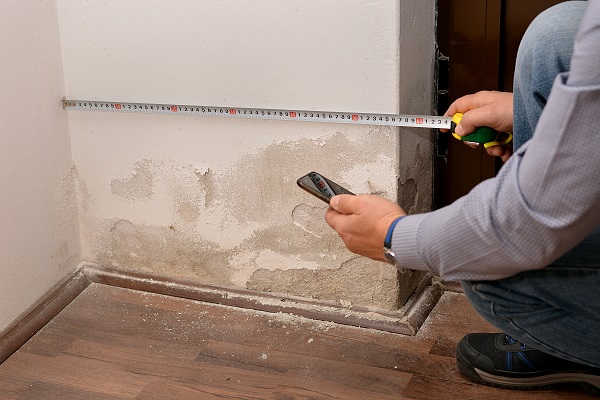Right here in the next paragraph you can get a good deal of incredibly good resources pertaining to What You Can Do At Home To Prevent Fire And Water Damage.

Water gives life, water breach on parts where it's not meant to be can result in damages. If the water soaks into your structure, it can peel away surface areas and deteriorate the structure. Mold and mildew and also mold also flourish in a damp atmosphere, which can be dangerous for your health. Homes with water damage scent mildewy and old.
Water can originate from lots of sources such as typhoons, floodings, burst pipelines, leaks, as well as sewer concerns. In case you experience water damage, it would be excellent to know some safety and security precautions. Here are a couple of guidelines on how to manage water damage.
Do Prioritize Residence Insurance Protection
Water damages from flood because of hefty winds is seasonal. However, you can likewise experience an abrupt flooding when a faulty pipe instantly bursts into your house. It would certainly be best to have residence insurance that covers both acts of God such as natural disasters, as well as emergency situations like busted plumbing.
Do Not Neglect to Turn Off Utilities
This reduces off power to your entire house, avoiding electrical shocks when water comes in as it is a conductor. Do not neglect to turn off the main water line shutoff.
Do Remain Proactive and Heed Weather Signals
Pay attention to evacuation warnings if you live near a lake, creek, or river . Doing so reduces prospective residential or commercial property damages.
Do Not Neglect the Roofing System
Prior to the weather turns shocking, make sure you have a roof examination. It would be prudent to get this solution each year as it can mitigate complex problems. You can stay clear of rainfall damages if there are no openings and leaks in your roofing system. Your roofing contractor will certainly also take care of defective gutters or any other indications of weakening. This will avoid water from streaming down your walls and soaking your ceiling.
Do Take Notice Of Tiny Leakages
A burst pipe does not occur overnight. Typically, there are red flags that indicate you have actually damaged pipelines in your home. For example, you may observe bubbling paint, peeling wallpaper, water streaks, water discolorations, or trickling noises behind the walls. At some point, this pipeline will certainly rupture. Ideally, you need to not await things to escalate. Have your plumbing fixed prior to it results in massive damages.
Do Not Panic in Case of a Burst Pipeline
Maintaining your presence of mind is essential in a time of dilemma. Due to the fact that it will suppress you from acting fast, panicking will just compound the issue. Timing is crucial when it comes to water damage. The longer you wait, the more damages you can anticipate. Thus, if a pipeline bursts in your home, immediately turned off your major water valve to cut off the resource. Unplug all electric outlets in the location or turn off the circuit breaker for that part of the home. Ultimately, call a respectable water damages remediation expert for aid.
Water provides life, water breach on parts where it's not meant to be can result in damages. Residences with water damages scent old and also musty.
Water damage from flooding charges to heavy winds is seasonal. You might observe gurgling paint, peeling off wallpaper, water touches, water discolorations, or trickling audios behind the wall surfaces. When it comes to water damages, timing is crucial.
Some Do's & Don't When Dealing with a Water Damage
DO:
Make sure the water source has been eliminated. Contact a plumber if needed. Turn off circuit breakers supplying electricity to wet areas and unplug any electronics that are on wet carpet or surfaces Remove small furniture items Remove as much excess water as possible by mopping or blotting; Use WHITE towels to blot wet carpeting Wipe water from wooden furniture after removing anything on it Remove and prop up wet upholstery cushions for even drying (check for any bleeding) Pin up curtains or furniture skirts if needed Place aluminum foil, saucers or wood blocks between furniture legs and wet carpet Turn on air conditioning for maximum drying in winter and open windows in the summer Open any drawers and cabinets affected for complete drying but do not force them open Remove any valuable art objects or paintings to a safe, dry place Open any suitcases or luggage that may have been affected to dry, preferably in sunlight Hang any fur or leather goods to dry at room temperature Punch small holes in sagging ceilings to relieve trapped water (don't forget to place pans beneath!); however, if the ceiling is sagging extremely low, stay out of the room and we'll take care of it DO NOT:
Leave wet fabrics in place; dry them as soon as possible Leave books, magazines or any other colored items on wet carpets or floor Use your household vacuum to remove water Use TV's or other electronics/appliances while standing on wet carpets or floors; especially not on wet concrete floors Turn on ceiling fixtures if the ceiling is wet Turn your heat up, unless instructed otherwise

We had been made aware of that editorial on Reducing Your Risk Of Water And Fire Damage At Home through a good friend on a different domain. I beg you take a moment to share this post if you enjoyed it. Thanks a lot for your time invested reading it.